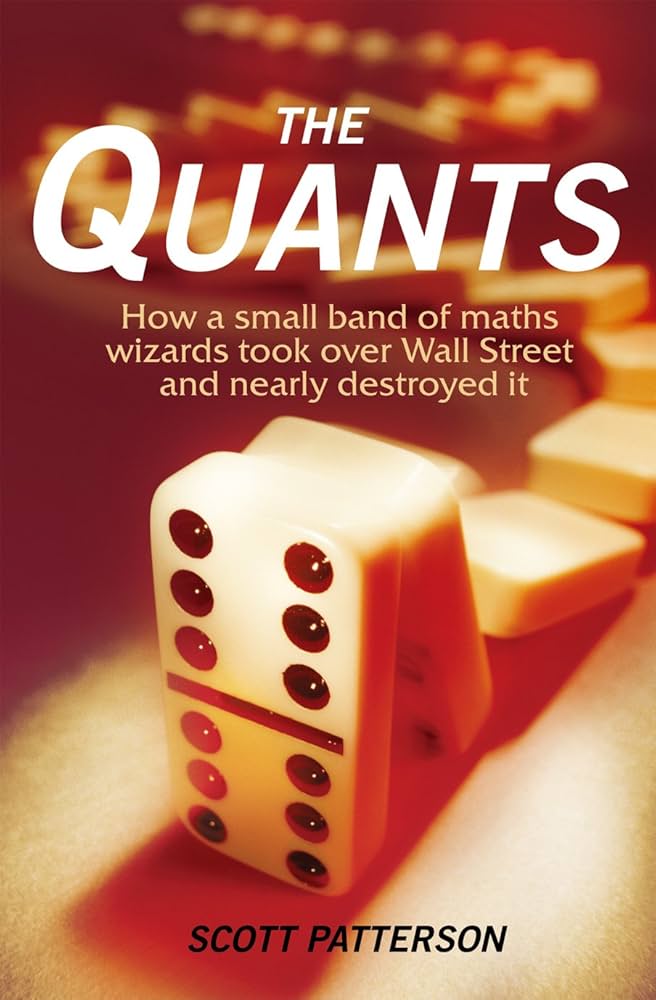
The Quants by Scott Patterson
Does the financial market hold a Truth? Will anyone ever discover "the Truth" — the complete ins and outs of the market? Jim Simons, founder of Renaissance Technologies, seemed to have done it through mathematics and an army of PhD students and math wizards. But when did this trend emerge — using mathematics to uncover truths in financial markets? When did students with STEM backgrounds start joining trading firms instead of finance students? Why was the guy in a hoodie suddenly making seven figures in the financial markets, even when he seemed to be obsessed only with math? This is what "The Quants" by Scott Patterson explores.
The book covers the rise of quants and how they transformed Wall Street. Instead of summarizing the entire story in less detail, I focus on some of the 🔑 takeaways from the book:
My 🔑 takeaways:
- Historical Foundation: The first mathematicians began examining financial markets in 1900 when Louis Bachelier submitted a doctoral thesis on stock price movements. Later, Harry Markowitz and Eugene Fama made major advancements in quantifying market theory and portfolio construction. The true breakthrough came when Edward Thorp applied mathematics to gambling, developing a system to beat blackjack, which led to the first quantitative trading strategies in the 1960s. He published "Beat the Dealer" (1962) and "Beat the Market" (1967).
- The Truth Paradox: What makes modeling the stock market so difficult is that once a few players discover "the Truth," it ceases to be "the Truth" because trades will affect the market again. This randomness is reflected in the connection between Brownian motion and price movements. Due to this randomness, many quantitative trading firms were caught off guard on October 19, 1987—"Black Monday"—when the Dow Jones lost 22.6% in a single day. As Benoit Mandelbrot noted: "Over long periods, equilibrium tends to rule the day. But that misses the point. Prices can gyrate wildly over short periods of time—wildly enough to cause massive, potentially crippling losses to investors who've made large, leveraged wagers."
- Efficient Market Hypothesis: The debate centers around the "Efficient Market Hypothesis" (EMH), which assumes that prices reflect all available information. The quants used this concept to their advantage: "The quants viewed EMH as a key weapon in their arsenal: The probabilities of various movements of an efficient market could be understood through the math spawned by Brownian motion. The most likely moves were those found near the middle of the bell curve, which could be used to make forecasts about the probable future volatility of the market over the course of a month, a year, or a decade."
- Major Crises: In August 2007, a massive "quant quake" shook financial markets, with Goldman Sachs' $9 billion Global Alpha quant fund declining 27% and their Global Equity Opportunities fund losing more than 30% in a single week. The Financial Crisis of 2008 was another major blow—AQR's flagship fund lost 46%, Citadel saw its AUM drop from $20 billion to $10.5 billion, and numerous smaller quant funds were forced to shut down.
- Success Stories: Despite these crises, some firms managed to "solve" the market. The well-known Medallion Fund achieved a 66% annualized return before fees (39% after fees) from 1988 to 2021. Between January 1993 and April 2005, Medallion had only 17 losing months out of 49 quarters, with just one losing year (1989). However, these machines are dangerous—they require adequate brakes and leverage controls, or they might send a wave of destruction through the markets due to the vast interconnectedness of today's financial system.
💭 "The hard part is the human side. We're modeling humans, not machines." —Paul Wilmott
Final Word
Pioneers such as Ed Thorp, Pete Muller (Morgan Stanley's hedge fund), Ken Griffin (Citadel LLC), James Simons (Renaissance Technologies), Clifford S. Asness and Aaron Brown (AQR Capital Management), and Boaz Weinstein (Deutsche Bank) made incredible advances in quantitative finance. However, we must never forget days like Black Monday or crises like 2007 and 2008—when markets suddenly seemed random and unpredictable. In the end, we are dealing with humans, and human behavior remains one of the biggest mysteries in finance.

